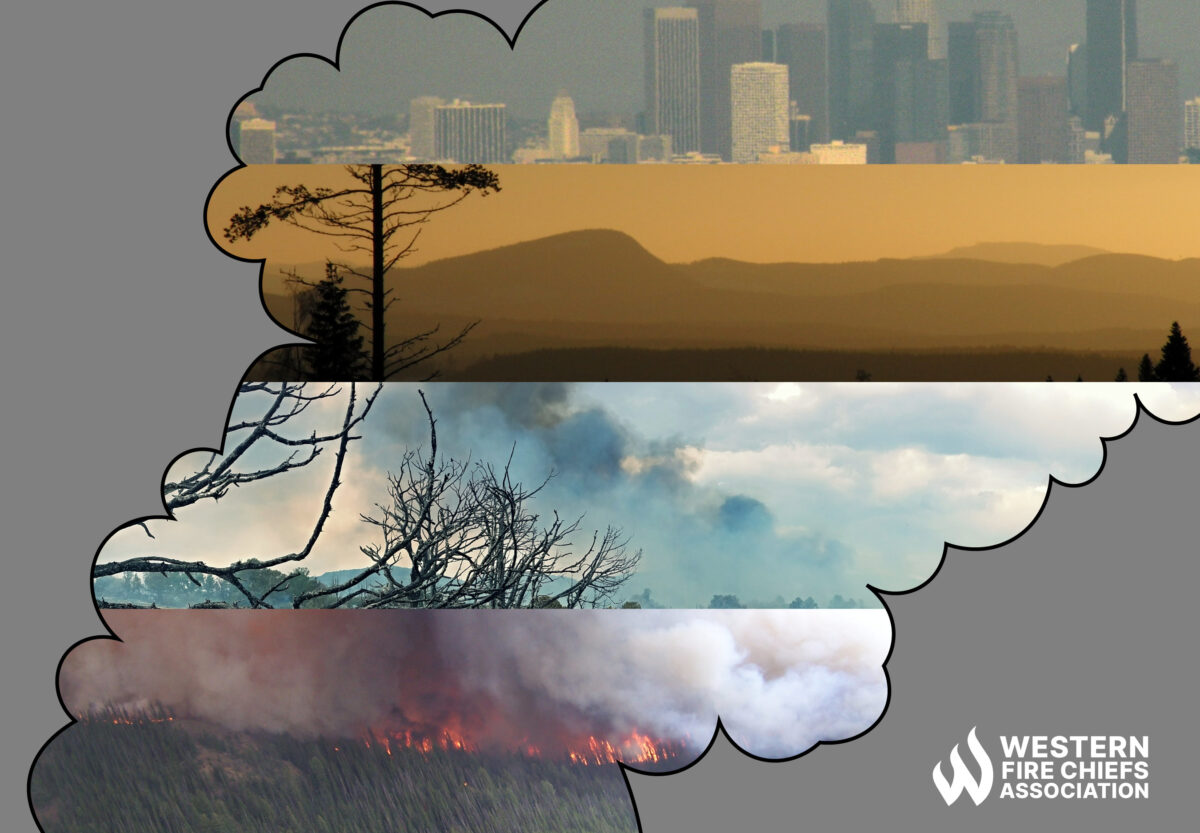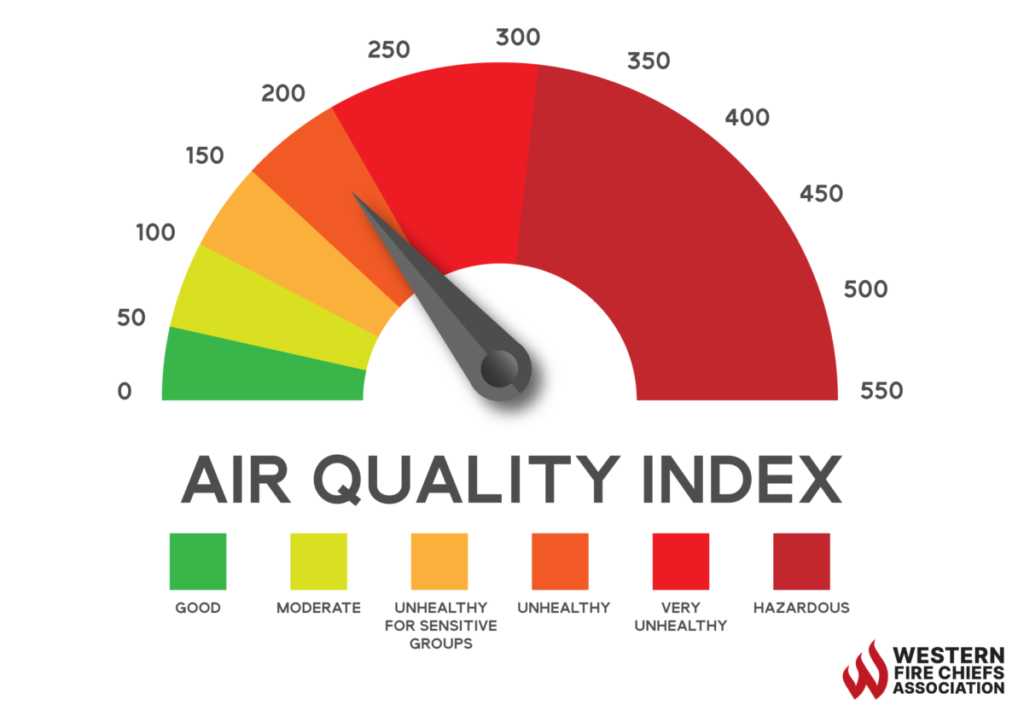Fire Pit Safety Tips
Stay safe around the campfire with tips from the Western Fire Chiefs Association. Learn essential precautions and practices for a worry-free outdoor campfire.
Learn about wildfire smoke and air quality and get tips on how to protect yourself and your family from the impacts of smoke from wildfires with guidance from the WFCA.
Published:March 13, 2023
Edited:March 1, 2024

Learn about wildfire smoke and air quality and get tips on how to protect yourself and your family from the impacts of smoke from wildfires with guidance from the WFCA.
When wildfires are burning, smoky conditions can spread far from the site of the fire. Wind pushes smoke to cover large areas, and this puts many people at risk of adverse health effects. It is important to be aware of the air quality in your community and know how to protect yourself and your loved ones from the effects of wildfire smoke.
Wildfire smoke is full of particle pollutants, which are a mix of microscopic solid and liquid particles that are small enough to hang in the air and create the haze associated with smoke. These particles are tiny enough to enter the lungs. Ultrafine particles can even make it from the lungs to the bloodstream.1 The United States Environmental Protection Agency (EPA) declared particle pollutants a serious health threat in a study published in 2019.2 Wildfires, agricultural fires, and prescribed fires are some of the largest sources of fine particles entering the atmosphere and create about 36% of fine particle pollutants.1
Fires and smoldering embers also release carbon monoxide (CO). When inhaled, this colorless, odorless gas reduces oxygen delivery in the body. CO from wildfire smoke can cause headaches, nausea, and dizziness. In high concentrations, it can lead to death as the body fails to absorb enough oxygen.1
Carbon monoxide is also a greenhouse gas that builds up in the atmosphere and contributes to climate change. Wildfire smoke releases other greenhouse gases such as methane, nitrogen oxide (NO) and nitrous oxide (N2O). Long after a wildfire has died out, the local air quality can remain affected by pollutants released by fire.3
The Air Quality Index (AQI) is a scale developed by the EPA that reports on daily air quality in areas throughout the nation. In the United States, the EPA calculates the AQI for five major air pollutants that are regulated by the Clean Air Act. These include particle pollution/particulate matter, carbon monoxide, and nitrogen dioxide.4 The higher the AQI value, the more polluted the air is, and the greater the concern for negative health effects.
The scale runs from 0 to 500 and is broken into six categories ranging from ‘Good’ to ‘Hazardous.’ The scale is color-coded and includes notes on how air quality may affect sensitive groups—for example, ‘Moderate’ air quality may still be risky for people who are sensitive to air pollution.4

Wildfire smoke can have harmful effects on anyone who is exposed. However, some groups of people are at greater risk for experiencing adverse health issues from inhaling the gases and fine particles in the smoke.
Air pollution can be extremely harmful for the 30 million+ people in the United States who have a chronic respiratory disease such as asthma or chronic obstructive pulmonary disease (COPD).5 Wildfire smoke can lead to breathing difficulties and trigger worse symptoms for existing lung conditions.
Similarly, wildfire smoke can put people who have chronic circulatory system conditions at greater risk for heart attack, heart failure, or stroke.5 Examples of circulatory conditions include high blood pressure, heart failure, vascular diseases, and cerebrovascular conditions.
Adults over 65 are more likely to have lung and heart diseases, which put them at increased risk of health problems from short-term exposures to wildfire smoke. Elderly people also experience a decline in important physiologic processes. These processes are basic functions that affect all systems in the body.6 Because of decreased functions, the bodies of older adults may have trouble maintaining their natural defense mechanisms during an emergency such as a wildfire.5
Children are smaller than adults and often more active, particularly outdoors. Because of this, they often inhale more polluted air per pound of body weight. This affects lung development and can lead to asthma symptoms, even in children who do not have asthma. It is also important to pay attention to children’s emotional responses to wildfire. Natural disasters like a fire can be frightening and lead to trauma.5
Physiologic changes during pregnancy (e.g., higher respiratory rate, increased blood volume) make pregnant people more vulnerable to environmental hazards. Additionally, the stress during an emergency event like a wildfire can lead to poor birth outcomes like low birth weight.7 Planning ahead to reduce stress and having an evacuation plan in place can help, along with carefully following guidelines to reduce smoke and pollutant exposure.8
People who are working outside with high smoke pollution in the area are at a higher risk of a range of health effects. Eye and respiratory tract irritation are a common complaint of outdoor workers, but smoke exposure can also trigger asthma attacks or cause a cardiovascular event.5
Studies of the effect of wildfire smoke on humans and animals show respiratory symptoms and a decrease in lung function.5 Wildfire smoke exposure can cause the following symptoms:
There are many ways to protect yourself and your loved ones from smoke. Here are a few key precautions to take to limit wildfire exposure.
https://www.epa.gov/smoke-ready-toolbox-wildfires/wildfire-smoke-resources-protect-your-health
Stay safe around the campfire with tips from the Western Fire Chiefs Association. Learn essential precautions and practices for a worry-free outdoor campfire.
Discover essential firework safety tips to ensure a dazzling display without accidents. Learn how to celebrate responsibly with expert guidance from WFCA.
Explore the role of AI in wildfire prediction with guidance from the WFCA. Learn how advanced algorithms and data analytics enhance early detection and response.